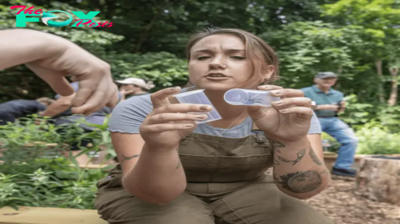Health
A Greener View: Poisonous plants pose special risk to children, pets – Jeff Rugg
by Jeff Rugg, contributing writer, A Greener View
I would like to describe an incident in hopes that it will protect some children. A young lady and her two boys came in the door carrying a branch. This is a common occurrence because bringing in a branch is the best way for us to identify insect and disease problems. At first glance, the branch looked free of problems, and that is when the mother mentioned that one of the boys had been eating the berries.
She wanted to know what kind of plant it was and whether it was poisonous. These were not easy questions to answer since little is known about the poisoning ability of most plants, and there were a couple of possibilities as to what her plant actually was.
I am sure that we identified it accurately as the common landscape shrub called tallhedge or buckthorn. Its botanic name is Rhamnus frangula “columnaris.” The doctor at the poison control center felt it should be considered a potentially serious problem because it is very similar to another common landscape shrub called common buckthorn. Its botanical name hints at the problem: Rhamnus cathartica.
A cathartic substance purges the digestive system. In a child, this can lead to dehydration. The doctor suggested the boy be taken to the closest poison control center for observation.
While most plants are considered safe and any toxins present are in low concentrations, it is important to know what kinds of plants you have in your home and landscape. Children are more at risk because symptoms develop with smaller doses of material. Children under the age of 5 are very curious and frequently put things in their mouths. Children should be taught as young as possible not to chew on plants.
The biggest problem with plant poisonings is that we know very little about most plants’ ability to poison. Some are very obvious killers, like certain mushrooms; even plants with edible parts, like the tomato, can have poisonous parts (tomato leaves infrequently cause internal poisoning symptoms). Often the toxic compounds are concentrated in specific plant parts like the bark, fruit, flower buds or roots.
Watching what Animals eat is not necessarily a good indicator of what may bother a human. Animals aren’t bothered by some poisonous plants, and they can eat larger quantities of plants we wouldn’t eat because of an unpleasant taste.
The list of possible symptoms is practically endless. However, many are the same as typical flu symptoms: vomiting, diarrhea, weakness and abdominal pain.
Unfortunately, there is no room in this article to list in detail the plants, the poisonous parts and the range of symptoms associated with each plant.

Here are a couple of quick lists of some common plants that you may not have known have some poisonous parts. If they are in your yard, you can search for more information. I am not including a few plants that everyone knows, like poison ivy.
The first list is trees, shrubs and vines: azalea, black locust, buckeye and horse chestnut, buckthorn, clematis, elderberry, English ivy, holly, hydrangea, oleander, privet, rhododendron, Virginia creeper, wisteria and yew.
The second list is houseplants and perennials: bulbs such as lilies, daffodils and hyacinth, caladium, dieffeNBAchia, foxglove, iris, Jack-in-the-pulpit, Kentucky coffee tree, lantana, larkspur, lily of the valley, philodendron, rhubarb and nightshade.
The information in this article is not intended to frighten you into rushing out and cutting down everything in your yard that has berries. But you should know the names of the plants in your landscape.
___
To read more columns on gardening by Jeff, go to: https://rinewstoday.com/?s=jeff+rugg

To find out more about Jeff Rugg and read features by other Creators Syndicate writers and cartoonists, visit the Creators Syndicate website at www.creators.com.
Email questions to Jeff Rugg at [email protected].
COPYRIGHT 2023 JEFF RUGG – DISTRIBUTED BY CREATORS
-

 Health1d ago
Health1d agoThe Surprising Benefits of Talking Out Loud to Yourself
-

 Health1d ago
Health1d agoDoctor’s bills often come with sticker shock for patients − but health insurance could be reinvented to provide costs upfront
-

 Health1d ago
Health1d agoHow Colorado is trying to make the High Line Canal a place for everyone — not just the wealthy
-

 Health1d ago
Health1d agoWhat an HPV Diagnosis Really Means
-

 Health1d ago
Health1d agoThere’s an E. Coli Outbreak in Organic Carrots
-

 Health2d ago
Health2d agoCOVID-19’s Surprising Effect on Cancer
-

 Health2d ago
Health2d agoColorado’s pioneering psychedelic program gets final tweaks as state plans to launch next year
-

 Health3d ago
Health3d agoWhat to Know About How Lupus Affects Weight



























